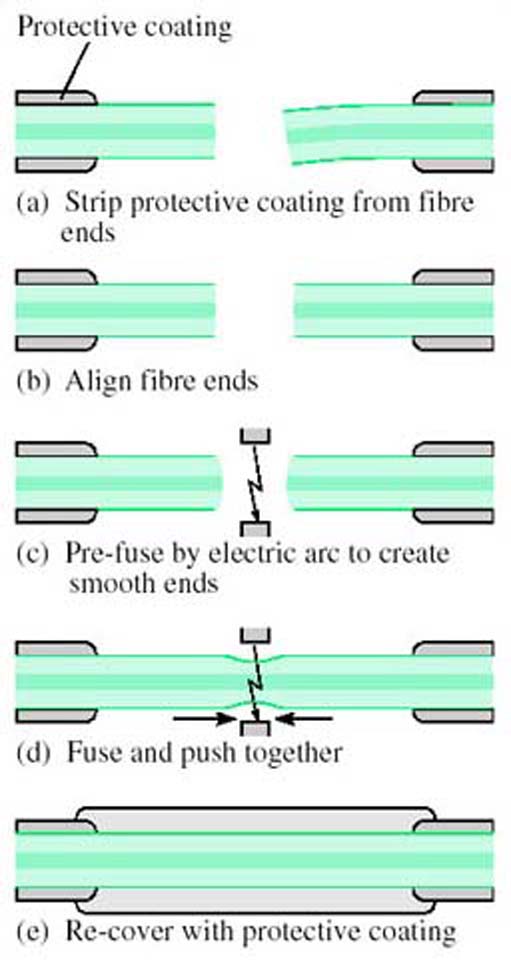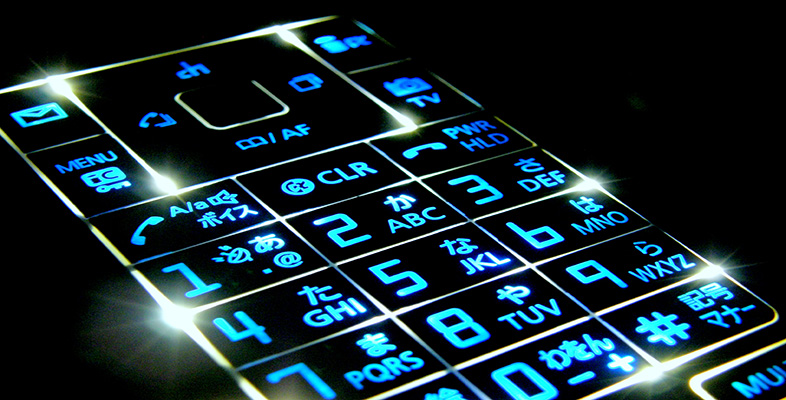2.6.2 Splicing
The usual technique for splicing in the field is electric arc fusion splicing. This involves aligning the two fibre ends and then fusing them with an electric arc.

Specially designed jigs are used for this purpose, and the steps involved are as shown in Figure 17:
(a) Strip all protective coating from the fibre ends.
(b) Place the fibres on the jig and align the ends using a microscope.
(c) Pre-fuse the fibre ends to give a smooth surface.
(d) Bring the fibres together and fuse.
(e) Re-cover the stretch of bare fibre with a protective coating.
To avoid relying on the outside surface of the fibre for alignment, a technique is used in some jigs based upon shining light through the two fibres while they are being aligned. The best alignment is indicated by the lowest loss. Light injection and extraction is done (all within the jig) by bending the fibres beyond the point at which light is guided (Figure 18) – but not so far as to risk damaging the fibre.

